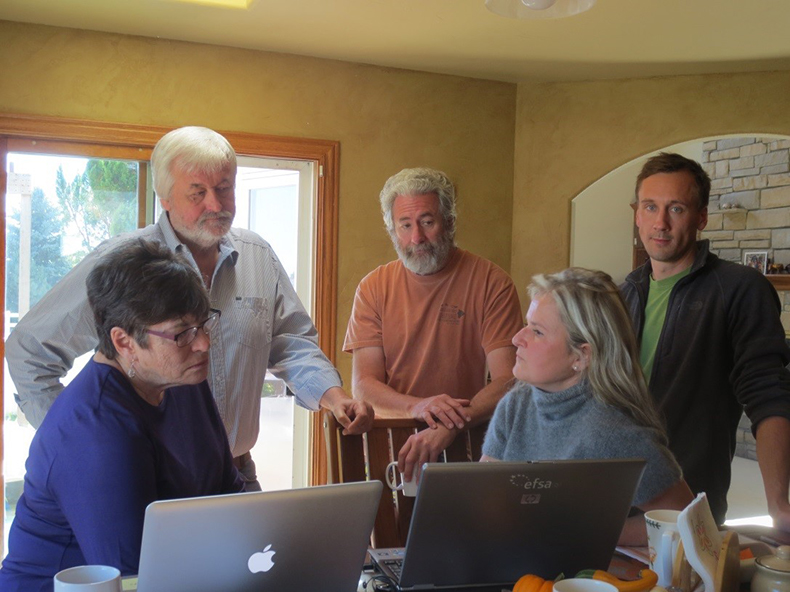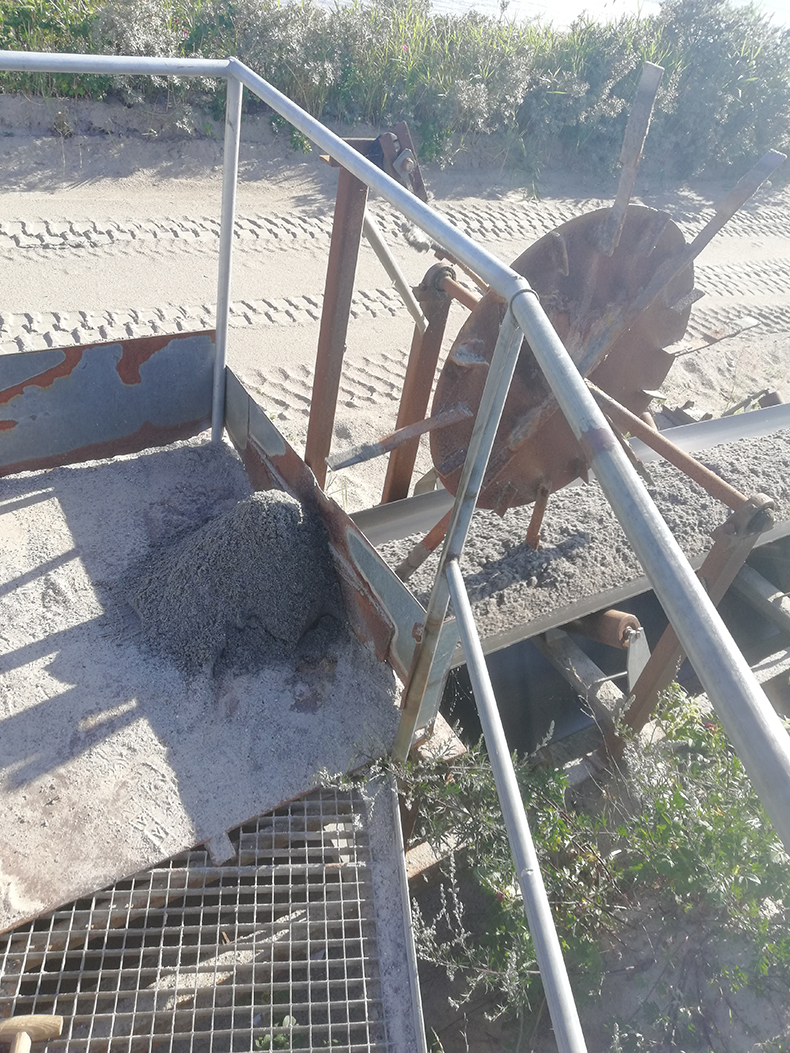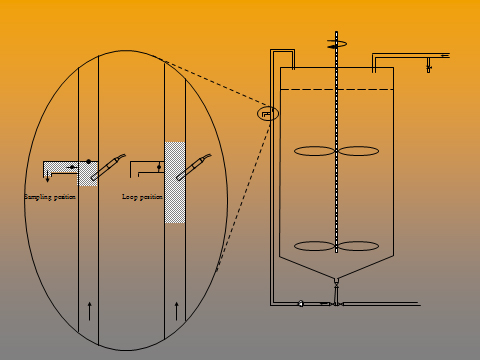Kim H. Esbensen
Adjunct professor, Aalborg University (AAU), Denmark; Adjunct professor, Geological Survey of Denmark and Greenland (GEUS); Professeur associé, Université du Québec à Chicoutimi (UQAC), Quebec; Guest professor University of Southeast Norway (USN); Guest professor (2018) Recinto Universitario de Mayaguez, Puerto Rico. [email protected], www.kheconsult.com
DOI: https://doi.org/10.1255/sew.2019.a2
© 2019 Spectroscopy Europe
This column concludes the first series of Sampling Columns. More will appear in a sequel series, mainly aimed at presenting practical examples, case histories, demonstrations—all of which will assume that the value of only practicing representative sampling has been fully acknowledged and the relevant know how has been comprehended. Here, we end the first educational exposé of the Theory of Sampling (TOS) by focusing on the current state of awareness and with an acknowledgement of the need to involve TOS in all relevant international scientific fora, in technology, industry and in the commercial marketplace.
Historical context
The history of the World Conference of Sampling and Blending (WCSB),1 gives a snapshot of the highly satisfactory progress seen in the last 20 years since WCSB1 (2003), in which dissemination of the Theory of Sampling (TOS) has improved greatly. Reference 2 contains a plethora of earlier relevant historical references for the interested reader.
WCSB1 was the inaugural world conference on sampling, and the proceedings were conceived as a comprehensive tribute to the founder of TOS, Pierre Gy. The historical context leading up to WCSB1 can be found in Reference 3. Among Pierre Gy’s last publications is a fascinating account of the history of the development of TOS; in retrospect this is his scientific testament.4
Awareness
Despite this extensive activity, there are still innumerable occasions in science, technology, industry, and in governing, monitoring and regulation bodies in which awareness of the need for representative sampling is still more-or-less unknown. There are also on record cases in which this knowledge is deliberately not welcomed—we shall here a.o. focus on why such might be the case. Awareness and acknowledgement of the usefulness of applied TOS is an ongoing process that cannot be said to be likely to be completed anytime soon (counting in decades here). There is still much work to do.
So how to advance this critical awareness?
In areas, industrial sectors a.o., which have been “covered”, this mainly scales with the intensity of additional efforts put in, but it is equally important to direct efforts to new fora in which TOS and relevant applications have not yet been introduced. This, in many ways, has been the situation for the last 10–15 years. While illuminative and inspiring presentations, lectures and workshops at yearly meetings in science, trade and industrial sectors will never fail to make a significant impact, today there is also a community which is of the persuasion that the only thing that counts to disseminate knowledge are webinars, LinkedIn postings and the like. History will judge which avenue fits the bill best for increasing TOS awareness. It is true, however, that systematic efforts in the electronic and the social media are only at the very beginning. The young(er) generation(s) within the TOS community will lead the way!
Minimum competence level
As part of summing up the first part of the Sampling Columns, it is advantageous to present a brief overview of the minimum interest and comprehension necessary to assess the scientific rationale for Theory of Sampling (TOS). Also, why TOS is the necessary-and-sufficient framework for any sampling task, be this the critical primary sampling or any of the subsequent sub-sampling stages along the pathway towards a representative analytical aliquot. It is emphasised that the following applies to sampling of both stationary as well as moving lots (process sampling) of all sizes, forms and shapes.
- materials and lots in science, technology and industry are heterogeneous (Figure 1)—not knowing about heterogeneity (or not caring to know) is a breach of due diligence for all, for OEMs, for trade companies selling sampling equipment as well as for sampling professionals. The point of departure for all sampling procedures is —and how to counteract its effect on sampling accuracy and precision.
- The primary requirement for all sampling processes, and the corresponding equipment, is that of counteracting the heterogeneity met with. This is the main driving force behind all attempts to sample representatively.
- As a minimum it is necessary to be able to distinguish between Incorrect Sampling Errors (ISE), which lead to inaccurate sampling process which produces the fatal sampling bias and Correct Sampling Errors (CSE) which contribute to an unnecessary inflated sampling uncertainty (sampling imprecision). It is critically necessary to be able to distinguish between analytical accuracy and precision, and the sampling bias and precision. There is a world of difference, literally: while an analytical bias can be identified, quantified and thereby corrected for based on the assumption that it is constant (a fair assumption regarding analytical methods), the sampling bias cannot ever be corrected because it is inconstant.5
- All ISE must be eliminated before one can get past the crippling sampling bias, after which CSE must be minimised in order to make the sampling process sufficiently precise (reproducible). A representative sampling process must be unbiased and with an appropriately reduced sampling imprecision so as to become “fit-for-purpose” representative.
- TOS provides two facilities for estimating the effective magnitude of the uncertainty associated with any sampling process, i) the replication experiment6 and ii) variographic characterisation.7 Both of these allow identification of sampling processes as fit-for-purpose representative, or which are not in compliance with TOS (non-representative). In the latter case, TOS needs to be marshalled competently in order to remedy the sampling stations, procedures, equipment(s) identified as inferior.

Figure 1. Heterogeneous material.
These fundamental elements of TOS can be comprehended easily enough (perhaps with a little help from today’s many introductory texts, at all levels imaginable, or from dedicated workshops and courses). A first level competence can in fact be established in a remarkably short time span, for the dedicated audience in as short as, say, two or three days. There are no legitimate reasons to shy away from this modicum of effort in view of the goal: full comprehension of the critical understanding needed to never apply a sampling process without knowing the effective level of uncertainty that can be achieved. While disregard for such a commitment would be serious enough for an individual with sampling responsibilities, picture for example an OEM selling sampling equipment and pitching sampling solutions without having demonstrated to the customer the true quality of the products and services offered? For true quality: read proven representativity.
Vade mecum
Since 2013, there has been a general standard, in effect an international standard, with the sole purpose of outlining the general principles (there are only six) and the relevant sampling unit operations (there are only four) with which to be able to address any-and-all sampling tasks—for all types of lots (stationary and moving lots), for all levels of heterogeneity (low–intermediate–high), at all scales and under all sampling conditions. TOS to the fore!8–10
Various treatises also exist dedicated to more focused sectors, e.g. the food and feed sector. “Representative sampling for food and feed materials: a critical need for food/feed safety” is a mini-textbook, ostensibly directed towards this sector, which in reality presents the universal principles and procedures in TOS (Figure 2).11

Figure 2. The team behind the comprehensive introduction: “Representative sampling for food and feed materials: a critical need for food/feed safety”. Left-to-right: Nancy Theix, Kim H. Esbensen, Charles Ramsey, Claudia Paoletti and Claas Wagner. Photo: the author.
It takes only a few minutes to peruse a random selection of ISO and other guiding documents before one will meet a table in which the number of increments/samples are mandated to be proportional to the size (weight/volume) of the lot (batch, consignment) to be sampled. Here is just one simple test of the validity of such erroneous mandates.
According to this mandate, consider two lots of the same size (for this argument assume large lots) but of radically different heterogeneity. One lot is of very low heterogeneity, in fact so low so as to correspond to what in many sectors is called “uniform materials” which are defined as displaying a sampling uncertainty for repeated sampling below 2 %; take a storage silo of refined sugar as an example. The other lot could, e.g., be a run-of-the-mine ore (e.g. a mineralised rock with a very large difference in the proportions of mineralisation). Clearly it is not logical to deploy the same number of increments/samples to counteract the empirical heterogeneity met with for these two dramatically different lots. Even if one is addressing only one-and-the-same lot (i.e. the same heterogeneity), why should small(er) lots merit a smaller number of increments/samples than considerably larger lots if the heterogeneity is the same throughout the lot volume? Such recommendations have not been considered in the light of TOS’ full understanding of the relationships between lot/material heterogeneity and sample mass. This is a breach of due diligence, writ large!
For a compact introduction to these key issues, see References 8 and 12.
In practice…
As an example, who can condone selling “sampling equipment” and “sampling solutions” without having completed a replication experiment or a variographic characterisation of the unit as installed at the customer, with which to demonstrate the necessary “fit-for-purpose” representativity, with respect to a threshold decided upon together with the customer before installation? As a major example, the market and the literature is chock full of industrial hammer samplers and sampling spears (sampling thieves) that have not be subjected to such simple checks.
Why is this so?
This issue gets all the more interesting because there are actually a number of perfectly legitimate examples of installations of these types of sampling equipment that actually do work to a sufficient level of fit-for-purpose representativity (understandably this only is the case for some specific lots and materials of low heterogeneity).
In several practical cases, this has been demonstrated beyond any doubt because the seller was competent and conscientious enough to be in command of the simple six TOS Governing Principles (GP). Even if the buyer should not know this, it is still the obligation of the fair business partner in question to insist on performing this quality check of the equipment to be sold to the customer. This is an absolutely necessary, fair business ethics demand! This argumentation was recently laid out in full in a “tale” that has its roots in the most concrete real-world of today.5,13
The moral from this tale delineates the current frontline regarding how to, and how much to educate about TOS. This concerns the central question: “should one inform the customer in case he/she does not know?”. There are also cases on record in which the customer manifestly does not want to know! Which is another mystery all on its own.
Most importantly: “Is your company, corporation, organisation, institution aware of this fundamental moral obligation?”.
Is your company, corporation, organisation, institution ready to make the ultimate commitment to TOS?
To commit, or not to commit—that is the question!
What could be argument(s) against…
What could be arguments against being, or becoming TOS competent (enough) to live up to the above business ethical obligation? The present writer cannot conjure up any argument against TOS—and never mind the likely polemic accusation of being possessed by a gigantic bias!
This quip aside, this author has nevertheless had occasion to be exposed to a very large number of precisely such arguments during a 20-year long career within the realm of TOS. These arguments have been presented both from academic and technological communities, but especially from many sectors from industry and commerce.14
Consider two passionate antidotes for such unwilling, ill-informed, negative attitudes towards a commitment to invoke TOS whenever significantly heterogeneity is encountered.15,16
By the way, how can one ascertain whether one is addressing a lot material with a significant heterogeneity, or not (hope springs eternal…)? Easy, perform a replication experiment or a variographic characterisation.
PRACTICE, PRACTICE, PRACTICE…
Anticipating the themes that will be presented in the sequel series of Sampling Columns, dedicated to practical examples, case histories, demonstrations of both good (very good, excellent to brilliant) sampling, as well as bad (ill-informed, confused, inferior to critically dangerous) “sampling”, the latter without any right to appear under such a label, examples will mainly be drawn from two sources: “Sampling—Hall of Fame” and its antithesis “Sampling—Hall of Shame”.
Two more-or-less self-explanatory examples follow, one extremely simple, the other representing a much evolved and complex sampling situation.
The first is titled: “What’s wrong with this sampler?” Even a cursory inspection will reveal several elements in blatant non-compliance with TOS’ requirements for representative sampling (Figure 3).17

Figure 3. Wheel of fortune? Photo: the author.
Figure 4 shows the principal design of a process sampling valve and PAT-sensor deployment for a complicated case in which TOS sampling from a reactor is manifestly impossible. The illustration shows a NIR PAT sensor in an optimal location for nearly complete sampling bias elimination and optimised sampling precision made possible by way of a “recurrent loop”.18

Figure 4. PAT sensor in optimal location for nearly complete sampling bias elimination and optimised sampling precision. Copyright KHE Consulting (didactic archives) reproduced with permission.
The last word
This series of columns has made the strongest possible efforts to present the Theory and Practise of Sampling (TOS) as a logical set of heterogeneity-related principles and practical unit operations in an axiomatic manner. It is complete within its own restricted initiating framework, but it is, of course, far from complete w.r.t. a fully comprehensive theoretical foundation to which referral must be made to a series of textbooks and seminal papers, all of which constitute a logical next level for the interested reader. It is the hope that the present exposé will have served to initiate and have fostered enough interest for the reader to also want to progress towards this next goal.
It is fair to end this series with a selected key further reading list of suggestions for the next level publications (with a plethora of further references).
Further reading (a first foray selection)
P. Gy, Sampling for Analytical Purposes. Wiley, Chichester (1998).
F.F. Pitard, Theory of Sampling and Sampling Practice, 3rd Edn. CRC Press, Boca Raton, Florida (2019).
F.F. Pitard, Pierre Gy’s Theory of Sampling and C.O. Ingamells’ Poisson Process Approach, Pathways to Representative Sampling and Appropriate Industrial Standards. Doctoral thesis in technologies, Aalborg University, campus Esbjerg, Niels Bohrs Vej 8, DK-67 Esbjerg, Denmark (2009).
D. François-Bongarçon and P. Gy, “The most common error in applying ‘Gy’s Formula’ in the theory of mineral sampling and the history of the Liberation factor”, in Mineral Resource and Ore Reserve Estimation – The AusIMM Guide to Good Practice. The Australasian Institute of Mining and Metallurgy, Melbourne, pp. 67–72 (2001).
R.J. Holmes, ”Correct sampling and measurement— the foundation of accurate metallurgical accounting”, Chemometr. Intell. Lab. Sys. 74, 71–83 (2004). https://doi.org/10.1016/j.chemolab.2004.03.019
G. Lyman, “A brief history of sampling”, AusIMM Bulletin 39–45 (2014).
P. Minkkinen and K.H. Esbensen, “Sampling of particulate materials with significant spatial heterogeneity - Theoretical modification of grouping and segregation factors involved with correct sampling errors: Fundamental Sampling Error and Grouping and Segregation Error”, Anal. Chim. Acta 1049, 47–64 (2019). https://doi.org/10.1016/j.aca.2018.10.056
R.C.A. Minnitt and F.F. Pitard, “Application of variography to the control of species in material process streams: an iron ore product”, J. SAIMM 108(2), 109–122 (2008).
R.C.A. Minnitt and K.H. Esbensen, “Pierre Gy’s development of the Theory of Sampling: a retrospective summary with a didactic tutorial on quantitative sampling of one-dimensional lots”, TOS Forum Issue 7, 7–19 (2017). https://doi.org/10.1255/tosf.96
C. Ramsey, “The effect of sampling error on acceptance sampling for food safety”, WCSB9, Beijing, May 2019.
References
- K.H. Esbensen, History and Achievements of the World Conference of Sampling and Blending in the Decade 2003–2013. WCSB 6 (2013). https://www.dropbox.com/s/bq5chsjl12o4cm4/History_of_WCSB_KHE_WCSB6_proceedings.pdf?dl=0
- R.C.A. Minnitt, “The Pierre Gy Oration”, TOS Forum Issue 8, 17 (2018). https://doi.org/10.1255/tosf.104
- K.H. Esbensen, “50 years of Pierre Gy’s ‘Theory of Sampling’—WCSB1: a tribute”, Chemometr. Intell. Lab. Syst. 74, 3–6 (2004). https://doi.org/10.1016/j.chemolab.2004.06.005
- P. Gy, “Part IV: 50 years of sampling theory—a personal history”, Chemometr. Intell. Lab. Syst. 74, 49–60 (2004). https://doi.org/10.1016/j.chemolab.2004.05.014
- K.H. Esbensen, “A tale of two laboratories I: the challenge”, Spectrosc. Europe 30(5), 23–28 (2018). https://www.spectroscopyeurope.com/sampling/tale-two-laboratories-i-challenge
- K.H. Esbensen and Claas Wagner, “Sampling quality assessment: the replication experiment”, Spectrosc. Europe 28(1), 20–25 (2016). https://www.spectroscopyeurope.com/sampling/sampling-quality-assessment-replication-experiment
- K.H. Esbensen and Claas Wagner, “The variographic experiment”, Spectrosc. Europe 29(4), 14–18 (2017). https://www.spectroscopyeurope.com/sampling/variographic-experiment
- K.H. Esbensen and Claas Wagner, “Why we need the Theory of Sampling”, Analytical Scientist (2014). https://theanalyticalscientist.com/techniques-tools/why-we-need-the-theory-of-sampling
- https://webshop.ds.dk/da-dk/standard/ds-30772013 (includes preview).
- K.H. Esbensen and C. Wagner, “Theory of sampling (TOS) versus measurement uncertainty (MU) – A call for integration”, Trends Anal. Chem. 57, 93–106 (2014). https://doi.org/10.1016/j.trac.2014.02.007
- K.H. Esbensen, C. Paoletti and N. Thiex, “Representative sampling for food and feed materials: a critical need for food/feed safety”, J. AOAC Int. 98(2), 249–251 (2015). https://doi.org/10.5740/jaoacint.SGE_Esbensen_intro
- K.H. Esbensen and L.P. Julius, “DS 3077 Horizontal—a new standard for representative sampling. Design, history and acknowledgements”, TOS Forum Issue 1, 19 (2013). https://doi.org/10.1255/tosf.7
- K.H. Esbensen, “A tale of two laboratories II: resolution”, Spectrosc. Europe 30(6), 26–28 (2018). https://www.spectroscopyeurope.com/sampling/tale-two-laboratories-ii-resolution
- K.H. Esbensen and C. Paoletti, “Theory of Sampling (TOS): pro et contra”, Spectrosc. Europe 30(1), 23–26 (2018). https://www.spectroscopyeurope.com/sampling/theory-sampling-tos-pro-et-contra
- K.H. Esbensen, “Pierre Gy (1924–2015): the key concept of sampling errors”, Spectrosc. Europe 30(4), 25–28 (2018). https://www.spectroscopyeurope.com/sampling/pierre-gy-1924%E2%80%932015-key-concept-sampling-errors
- http://kheconsult.com/a-case-for-tos/
- K.H. Esbensen, “WHAT is wrong with this sampler?”, TOS Forum Issue 8, 16 (2018). doi: https://doi.org/10.1255/tosf.103
- K.H. Esbensen and P. Mortensen, “Process sampling (Theory of Sampling, TOS) – the missing link in Process Analytical Technology (PAT)”, in Process Analytical Technology, 2nd Edn, Ed by K.A. Bakeev. Wiley, pp. 37–80 (2010). https://doi.org/10.1002/9780470689592.ch3

